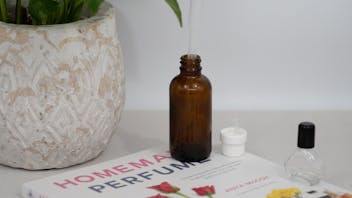Product Overview
This extremely aromatic expressed Lime essential oil leaves no doubt - the aroma is the epitome of very fresh Lime. Caution: expressed Lime is more phototoxic than Lime that is steam distilled.
The origin of Lime, Citrus aurantifolia, is believed to be the East Indian Archipelago where it is found on almost all its islands. From there it is believed to have spread east to the west coast of South America, and west to East Africa, Iran, Egypt, Arabia, and southern Europe. It is very likely that Lime seeds from Europe were brought to the West Indies and Florida after the Americas were colonized, and from there Limes spread to Texas, Mexico, California, Central and South America.[1],[2]
Like many Citrus oils, the invigorating aroma of Lime oil is comforting and familiar yet thoroughly uplifting and refreshing.[3] It is elevating in a diffuser, while the addition of Lime oil in massage blends is said to evoke an ambiance of serenity. Lime oil is also used in skincare preparations for oily or congested skin, hands and feet, leg lotions, and chest rubs. As a bright top note in natural perfumery, it can help bring balance to overly-sweet perfumes.
Cold pressed citrus peel essential oils are not byproducts of the juice industry, although the fruits used in the extraction of this product are used for both essential oil and juice. Processing these fruits with different machinery yields cold pressed essential oils from the peels and juice from the pulp – the juice, being a secondary product of oil extraction. The essential oil has a higher value than the juice, and even though the yield is lower (approximately 0.4 – 7% vs. 30 – 35%) both oils and juices are major market products.[4]
1 Arctander, Steffen. Perfume and Flavor Materials of Natural Origin, 1960, p. 371.
2 Guenther, Ernest. The Essential Oils, Vol. III, 1949, p. 287.
3 Sellar, Wanda. The Directory of Essential Oils, 1992, p. 95.
4 Industry Communication



